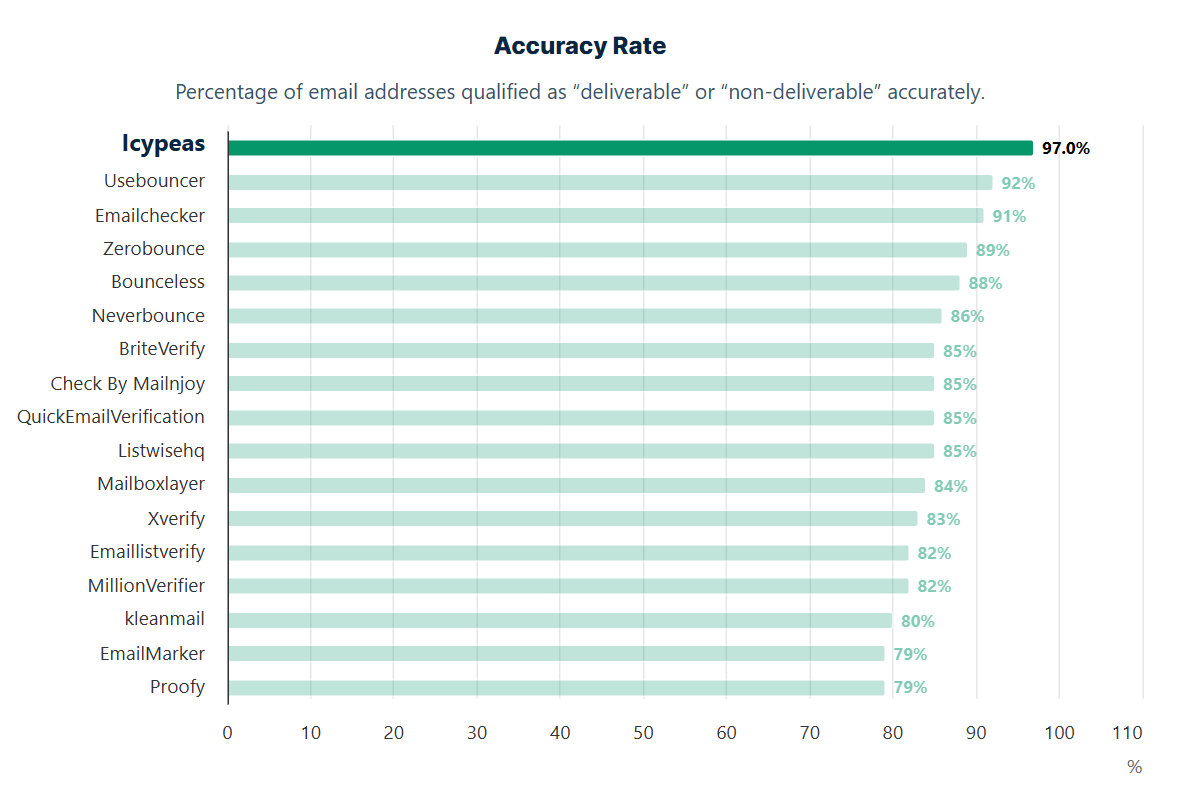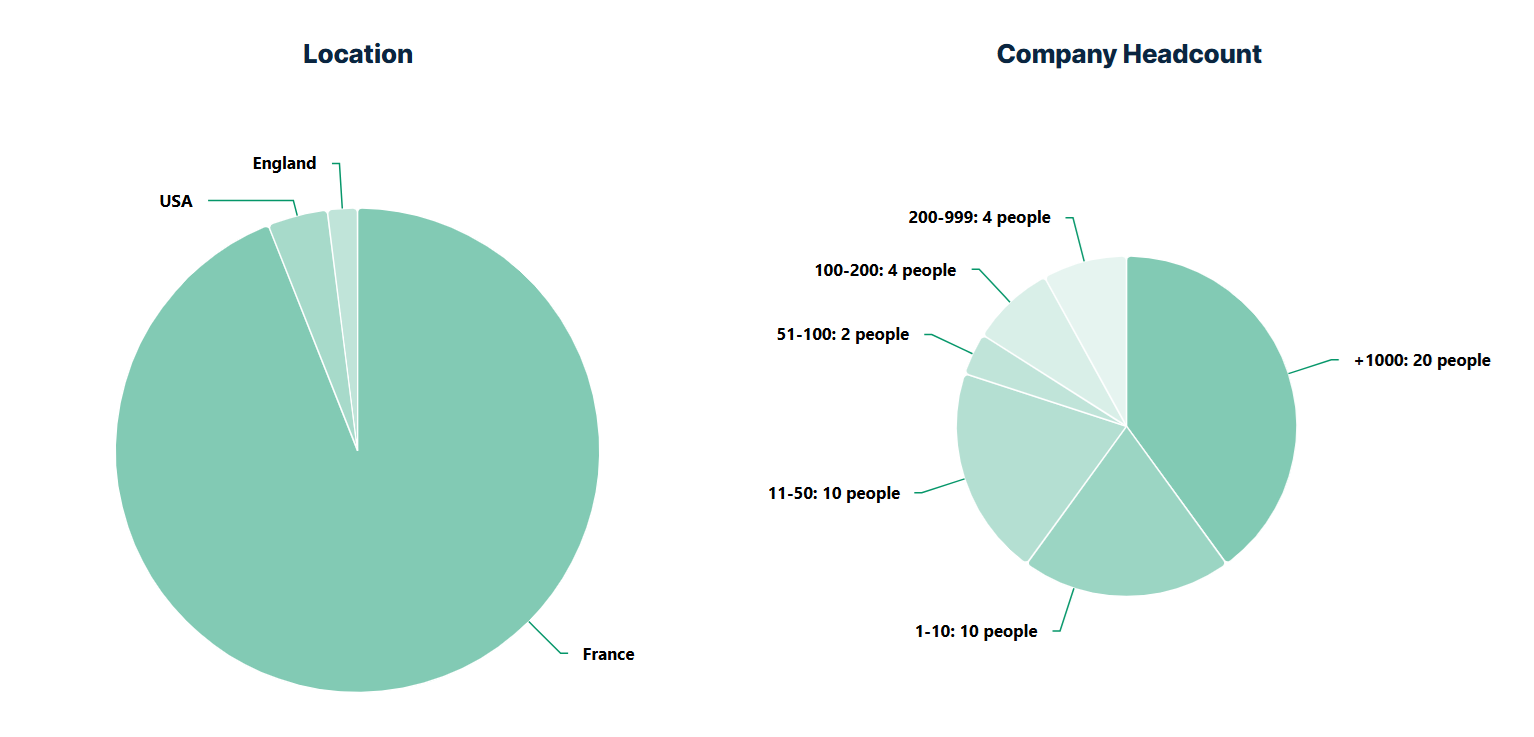The Best Email Verifiers in 2025
Choosing the right email verifier can make or break your outreach efforts. We've analyzed the top tools of 2025 to help you improve deliverability and avoid spam traps. Here’s what you need to know before you decide.

.avif)
17
100
18
215
Abstract
We have studied how well 17 email verifiers perform. Among them, world-famous solutions such as NeverBounce, ZeroBounce, BriteVerify, etc.
To do so, we have created a test file of 100 email addresses. The file has been processed by all the email verifiers. Finally, we measured the accuracy rate of each competitor.
Disclaimer: this study has been conducted by Icypeas, a new Email verifier. To establish our good faith and prove the reliability of this study, we have fully documented our work. To know more about this, see the "Open Data" section at the bottom of this page.
Results
We benchmarked 17 email verifiers. Here is what we found out:

Icypeas is the best email verifier. The study benchmarked 17 competitors. Icypeas has the highest accuracy rate (97%). The second best performer is Usebouncer with 92%, and the third one is EmailChecker with 91%. The market average performance is 85%.


Methodology
We conducted the benchmark study as follows:
Step 1: Sampling
We created a sample of 100 email addresses. 50 were valid email addresses, 50 were invalid email addresses. To find valid email addresses, we extracted email addresses from our corporate mailboxes. We picked emails of people we discussed with recently (<5 days), and we verified on Linkedin that these people did not move to a new company. This gave us a list of ~120 emails.
We selected 50 emails out of those 120 randomly. To do so, we used the RAND() function on Excel to give each email address a random numerical ID. Then, we sorted these IDs and we kept the 50 smallest. Also,we added 50 invalid email addresses. We created various kinds of invalid email addresses: some of them are built with an invalid domain name, some others have a valid domain name and a non-existing username. We invented plausible usernames, with realistic first and last names, avoiding gibberish usernames.To make sure that those email addresses were truly invalid, we sent actual messages to them and received hard bounce notifications.
Step 2: Verification
We have uploaded this 100-email list on the platforms we wanted to assess. Once the file was processed, we downloaded the verified list. We spotted the errors,i.e. the false positives (when an Email verifier says an email is deliverable while it is not) and the false negatives (when an Email verifier says an email is non-deliverable while it is). This gave us the accuracy rate, computed as follows: Accuracy rate = (number of emails – number of errors)/100.
Caveats
- It is important to keep in mind that each studied platform is likely to evolve in the future. Its performance can increase or, sometimes, decrease over time. That’s why we repeat our benchmark on a yearly basis, in order to have fresh updated indicators.
- Some Email verifiers have more than two statuses. In addition to “Deliverable” and “Non-deliverable”, they have “Risky”. Given the fact that users tend not to use “Risky” emails when they want to protect their sender reputation and deliverability, we have decided to assimilate the"Risky" status to the "Non-deliverable" status.
Sample Distribution
Here is how the 50 real persons in our test file are distributed along several criteria: geography, gender, seniority, company size, etc. We had no constraint on those criteria. That’s why the sample is not evenly distributed.


Open Data
We share our methodology and findings with full transparency.
- You can download our input test file here. Valid email addresses have been partially obfuscated for privacy reasons. If you wish to repeat the experiment in order to double check the results, do not hesitate to contact us: we will be happy to help.
- You can download the processed files here:
.avif)
.webp)